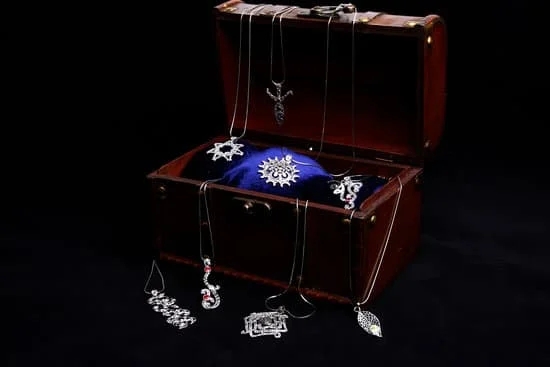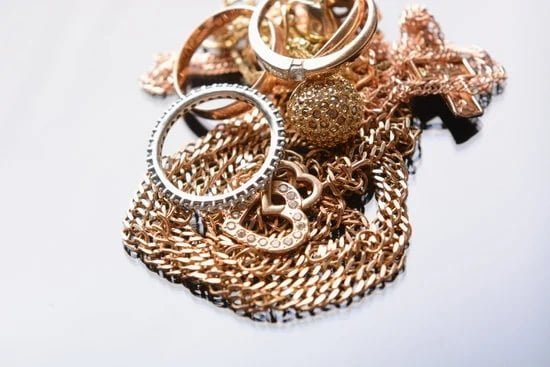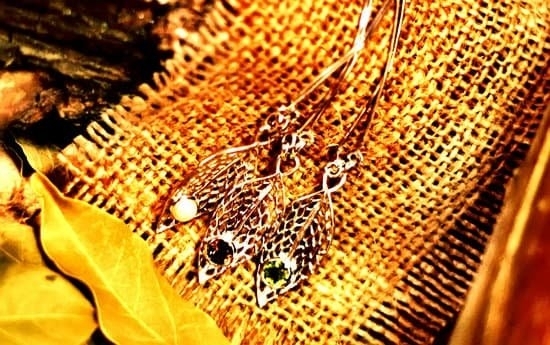Garnet, a stunning and versatile gemstone, has been used in jewelry for centuries. The history of garnet jewelry dates back to ancient civilizations and continues to captivate modern jewelry enthusiasts. The deep red stone has held significant meaning and symbolism throughout the years, making it a popular choice for both personal adornment and cultural expression.
Garnet is not only cherished for its aesthetic appeal but also for its rich history and cultural significance. From its ancient origins to its prominence in art and culture, garnet jewelry has stood the test of time. This article aims to explore the fascinating history of garnet jewelry, from its symbolic meanings in different cultures to its evolution through different historical periods.
Exploring the origin and meaning of garnet as well as its historical significance will provide insight into the enduring allure of this gemstone. Furthermore, examining the evolution of garnet jewelry through different ages, such as ancient civilizations, the Renaissance, Victorian era, and modern times, will showcase how this captivating stone has remained a timeless favorite in the world of jewelry.
The Origin and Meaning of Garnet
Garnet is a gemstone that has been prized for its stunning beauty and rich cultural significance for centuries. The name “garnet” is derived from the Latin word “granatus,” meaning seed, due to its resemblance to pomegranate seeds. This gemstone is known for its deep red color, but it can also be found in shades of green, orange, yellow, and even black. Garnet has long been associated with love, passion, and commitment, making it a popular choice for jewelry throughout history.
The origin and meaning of garnet can be traced back to ancient civilizations such as Egypt, Greece, and Rome. In these cultures, garnet was believed to have protective powers and was often worn as an amulet or talisman. It was also thought to have healing properties and was used in traditional medicine. Furthermore, garnet was used in religious ceremonies and rituals as a symbol of strength and purity.
In addition to its cultural significance, garnet holds geological importance as well. Garnets are commonly found in metamorphic rock formations around the world and have been used by geologists to date the age of these rocks. This further attests to the enduring appeal and value of this gemstone throughout history.
Historical Significance of Garnet Jewelry
Meaning and Symbolism
In ancient times, garnets were often worn as an amulet to ward off evil spirits and protect against nightmares. The deep red color of garnet was associated with blood and believed to symbolize strength, courage, and protection.
Use in Ancient Civilizations
In ancient Egypt, garnets were commonly used in jewelry and also placed in the tombs of pharaohs for their believed protective qualities during the afterlife. The Romans also valued garnets and crafted them into signet rings for sealing important documents. In many cultures throughout history, garnet jewelry was not only worn for its beauty but also for its perceived ability to bring good fortune.
Garnet Jewelry in Renaissance Art
During the Renaissance period, garnets continued to hold great importance in jewelry design. They were often set in elaborate pieces worn by royalty and nobility as a symbol of power and prestige. Additionally, religious art from this time often depicted important figures adorned with garnet jewelry, further emphasizing its significance.
The historical significance of garnet jewelry has played a pivotal role in shaping its evolution through the ages, from ancient civilizations to modern times. As we delve deeper into the history of garnet jewelry, it becomes apparent that this gemstone has held a prominent place not only in fashion but also in cultural beliefs and symbolism.
Evolution of Garnet Jewelry Through the Ages
Garnet jewelry has a rich history that spans across different civilizations and historical periods. The evolution of garnet jewelry through the ages reflects the changing cultural and artistic trends, as well as the significance of garnet in various societies.
One of the earliest recorded uses of garnet in jewelry dates back to ancient Egypt, where it was popularly used in amulets and other decorative items. The deep red hue of garnet symbolized power, protection, and vitality for the ancient Egyptians. In ancient Rome, garnet was also highly prized and often set into signet rings used for sealing important documents.
As time progressed, the use of garnet in jewelry continued to evolve. In medieval Europe, garnets were often used in religious items such as rosary beads, as well as in crown jewels due to their association with royalty and power. The Renaissance period saw a resurgence in the popularity of garnet jewelry, with intricate designs featuring clusters of smaller stones becoming more widespread.
In the 19th century Victorian era, garnets were prominently featured in jewelry due to Queen Victoria’s fondness for them. The deep red gemstone was often accented with seed pearls or diamonds for an elegant and romantic look. Today, modern designers continue to draw inspiration from these historical styles when creating contemporary pieces featuring garnets.
The evolution of garnet jewelry through the ages not only showcases the enduring appeal of this gemstone but also highlights its cultural significance and symbolism across different periods in history. Whether it is being used for protective purposes or as a symbol of love and passion, garnet continues to hold a special place in the world of jewelry design.
Famous Examples of Garnet Jewelry in Art and Culture
Garnet has been a popular gemstone for jewelry throughout history, and its beauty and significance have made it a favorite among artists and cultural icons. From ancient civilizations to the modern era, garnet jewelry has been prominently featured in art and culture, showcasing its timeless appeal.
Garnet Jewelry in Mythology and Religion
Garnet holds significant meaning in various mythologies and religions. In ancient mythology, it was believed that garnet illuminated the night and protected travelers. In Christianity, garnet is often associated with the sacrifice of Christ due to its deep red color resembling blood. These associations with protection, illumination, and sacrifice have made garnet a sought-after gemstone for religious jewelry and artifacts throughout history.
Garnets in Royal Collections
Throughout history, many royal families have cherished garnet as a symbol of power and wealth. Famous examples include the Russian crown jewels which feature impressive pieces of garnet jewelry, such as the famous “Siberian Garnet Necklace” worn by Empress Maria Feodorovna. Another notable example is the Bohemian Garnet Tiara worn by Czech royalty. These exquisite pieces showcase the grandeur and allure of garnet jewelry in royal collections.
Garnets in Artistic Masterpieces
The beauty of garnets has not only been appreciated by royalty but also revered by artists who have incorporated them into their masterpieces. From Renaissance paintings to Art Nouveau sculptures, garnets have been used to add richness and depth to artistic creations. For example, Jan van Eyck’s “Arnolfini Portrait” features a lady wearing a stunning pendant adorned with red garnets, reflecting their popularity as a symbol of love and passion during this time period.
As seen through these famous examples of garnet jewelry in art and culture, it is evident that this gemstone has held an enduring appeal that transcends time and continues to captivate admirers today.
Garnet Jewelry in Ancient Civilizations
The history of garnet jewelry dates back to ancient civilizations, where the gemstone was highly prized and used for both ornamental and spiritual purposes. Ancient Egyptians were known to incorporate garnets into their jewelry, and it is said that they believed the gemstone had protective properties. Garnet jewelry has also been found in ancient Roman, Greek, and Mesopotamian cultures, showcasing the widespread appreciation for this stunning gem.
One of the most famous examples of garnet jewelry from ancient civilizations is the use of garnets in the Czech Republic. The region was a major source of garnets during the Bronze Age, and it is believed that these gems were highly valued by Celtic tribes for both their beauty and supposed healing properties. The Czech Republic’s famed Bohemian garnet continues to be highly sought after for its rich red hue and historical significance.
Throughout history, it is evident that garnet jewelry held great importance for various civilizations around the world. From protective talismans to symbols of wealth and prosperity, the use of garnets in ancient civilizations offers a fascinating insight into the cultural significance of this stunning gemstone.
| Aspect | Description |
|---|---|
| Ancient Egyptian Use | Garnets were believed to have protective properties. |
| Celtic Tribes in Czech Republic | Bohemian garnets were valued for their beauty and healing properties. |
| Symbolism | Garnet jewelry served as talismans and symbols of wealth across various ancient civilizations. |
Renaissance and Victorian Era Garnet Jewelry
During the Renaissance and Victorian eras, garnet jewelry experienced a resurgence in popularity due to its deep red color and symbolic significance. In the Renaissance period, garnet jewelry was highly favored among the nobility and royalty. It was often used in elaborate designs for brooches, pendants, and tiaras. The gemstone’s rich color was seen as a symbol of love, passion, and vitality, making it a popular choice for romantic jewelry pieces.
In Victorian England, garnet jewelry became even more prevalent as it was widely associated with sentiments of affection and commitment. This era saw a rise in the production of garnet jewelry, ranging from simple designs worn by the middle class to intricate pieces reserved for the upper echelons of society. Garnets were commonly used in mourning jewelry during the Victorian era, serving as a reminder of lost loved ones due to their association with eternal love and friendship.
Artistic expression flourished during both the Renaissance and Victorian periods, leading to more intricate designs and craftsmanship in garnet jewelry. From ornate filigree work to dramatic use of cabochon-cut garnets, these eras produced some of the most stunning examples of garnet jewelry in history. The enduring appeal of Renaissance and Victorian era garnet jewelry continues to influence modern designs and trends in the industry today.
| Historical Period | Key Characteristics |
|---|---|
| Renaissance | Elaborate designs favored by nobility |
| Victorian Era | Widely associated with sentiments of affection and commitment |
| Renaissance & amp; Victorian Era | Influential in shaping modern designs and trends |
Modern Revival of Garnet Jewelry
Garnet jewelry has a rich and fascinating history that has evolved over the ages. The modern revival of garnet jewelry is a testament to its enduring appeal and timeless beauty. In recent years, there has been a renewed interest in this stunning gemstone, as designers and consumers alike are rediscovering the allure of garnet jewelry.
One of the factors contributing to the modern revival of garnet jewelry is its versatility. Garnets come in a variety of colors, from deep reds to vibrant greens, which allows for a wide range of designs and styles. Whether set in traditional yellow gold or contemporary white gold, garnet jewelry offers a unique and striking aesthetic that appeals to a diverse audience.
In addition to its aesthetic appeal, the resurgence of garnet jewelry can also be attributed to a growing appreciation for the historical significance and cultural symbolism of this gemstone. As consumers seek out meaningful and ethically sourced jewelry, garnet’s association with love, passion, and vitality makes it an appealing choice for those looking for more than just a beautiful accessory.
The history of garnet jewelry adds an extra layer of depth and meaning to each piece, making it all the more special for those who wear it.
As modern designers continue to reinterpret classic styles with contemporary flair, we can expect to see even more innovative and imaginative uses of garnets in jewelry. With its timeless elegance and rich history, garnet jewelry is poised to remain a beloved choice for discerning collectors and fashion enthusiasts alike.
The Value of Garnet Jewelry in the Market Today
In conclusion, the history of garnet jewelry is rich and diverse, reflecting the deep cultural significance and timeless beauty of this precious stone. From its origins and meanings to its evolution through the ages, garnet has maintained its allure in the world of jewelry. The historical significance of garnet jewelry is evident in its use by ancient civilizations, as well as its prominent role in Renaissance and Victorian era accessories.
Famous examples of garnet jewelry in art and culture further illustrate the lasting impact of this gemstone. Its modern revival has brought about a renewed appreciation for garnet jewelry, as it continues to be valued for its unique color and symbolism. Despite changing trends and preferences, the value of garnet jewelry in the market today remains significant, with collectors and enthusiasts alike seeking out vintage pieces and modern designs.
As we look back on the history of garnet jewelry, it becomes clear that this gemstone holds a special place in the hearts of many. Its timeless appeal has transcended centuries, making it a sought-after choice for both personal adornment and investment. Whether it’s an antique piece from ancient civilizations or a contemporary creation, garnet jewelry continues to captivate with its rich history and enduring beauty.
Frequently Asked Questions
What Is the History Behind a Garnet?
The history of garnet dates back to ancient civilizations, where it was considered a symbol of love, passion, and friendship. It has been used in jewelry and adornments for over 5000 years, often as a protective talisman.
Who Should Not Wear Garnet Stone?
People with high blood pressure or heart-related issues should avoid wearing garnet as it is believed to increase blood flow and circulation. Additionally, those who struggle with anxiety or insomnia may find that the stone exacerbates these conditions.
What Does It Mean When You Wear a Garnet?
Wearing a garnet is said to bring about positive energy, strength, and vitality. It can also symbolize commitment, making it a popular choice for engagement rings and other romantic jewelry. In addition, garnet is believed to help balance emotions and stimulate creativity when worn.

Welcome to my jewelry blog! My name is Sarah and I am the owner of this blog.
I love making jewelry and sharing my creations with others.
So whether you’re someone who loves wearing jewelry yourself or simply enjoys learning about it, be sure to check out my blog for insightful posts on everything related to this exciting topic!





